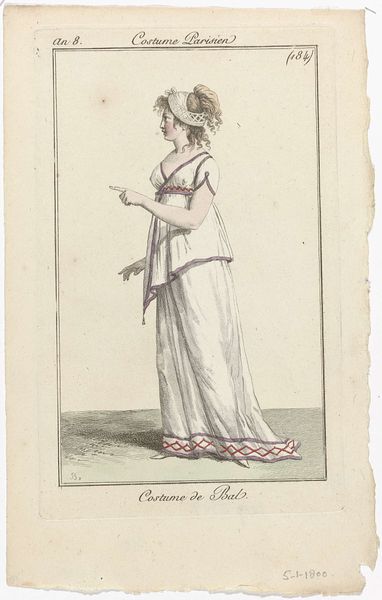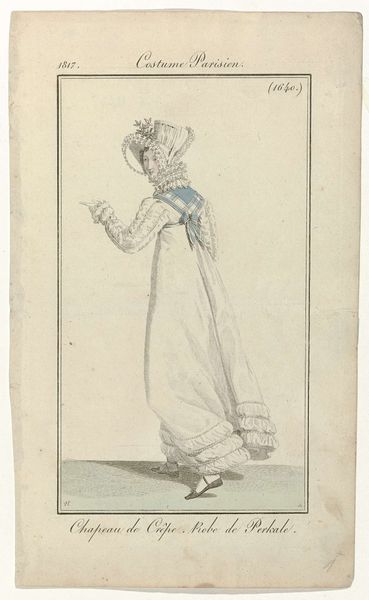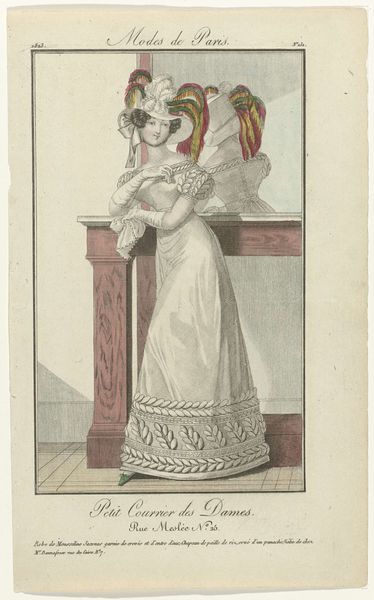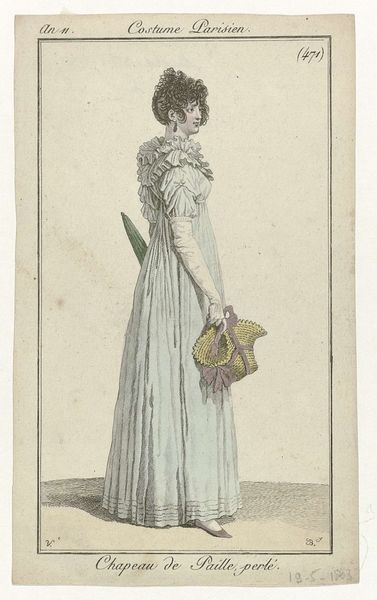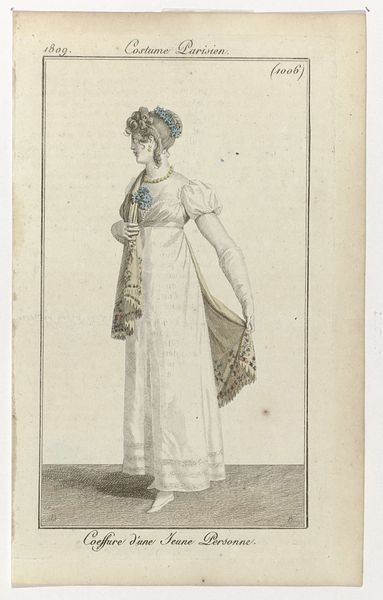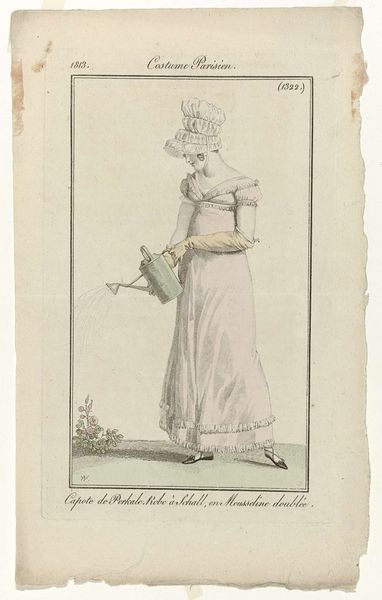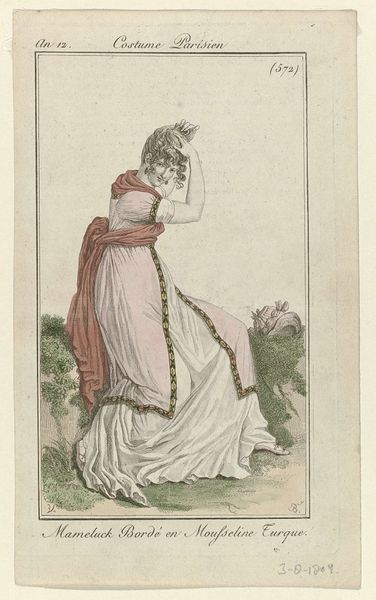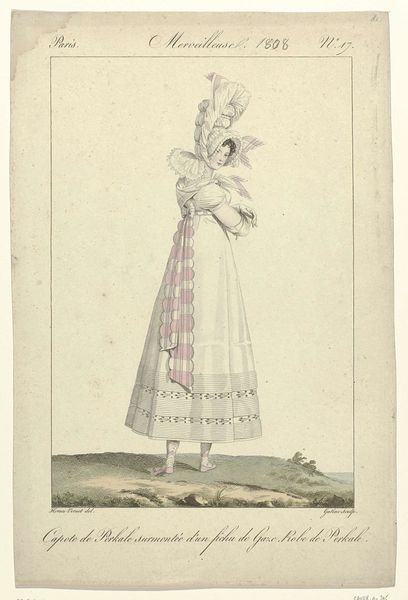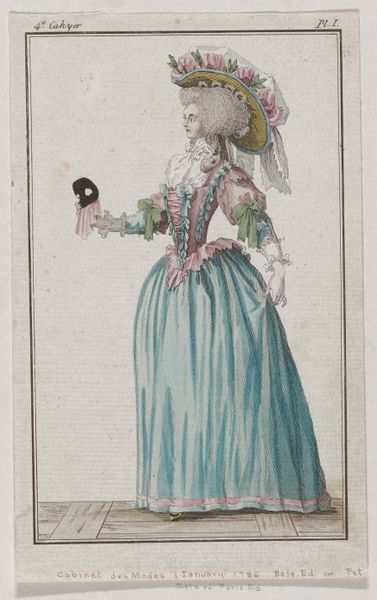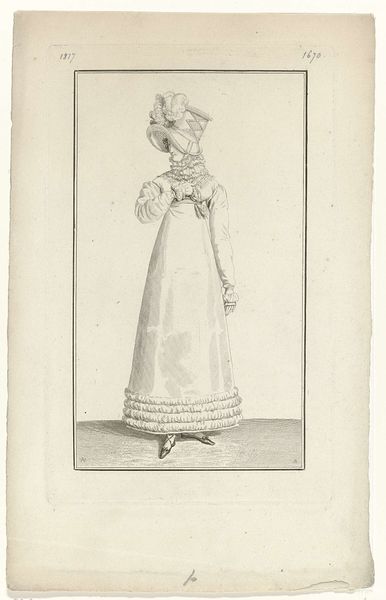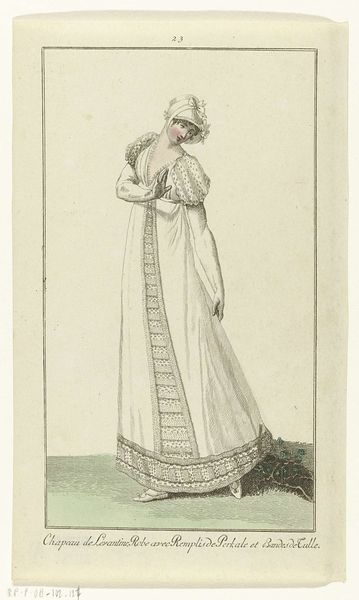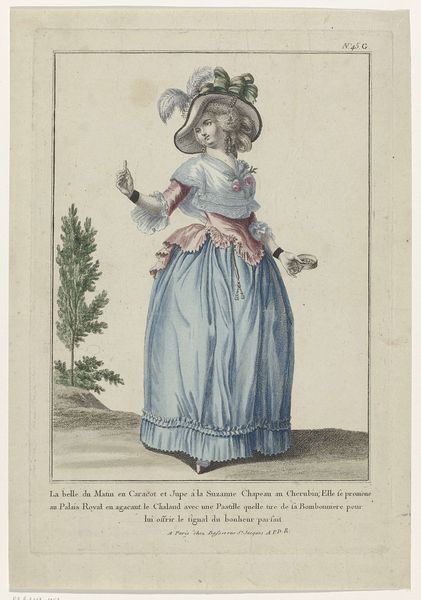
Journal des Dames et des Modes, Costume Parisien, 25 août 1810, (1083): Chapeau de paill (...) 1810
0:00
0:00
drawing, pen
#
portrait
#
drawing
#
neoclacissism
#
figuration
#
romanticism
#
pen
#
history-painting
#
dress
Dimensions: height 177 mm, width 108 mm
Copyright: Rijks Museum: Open Domain
Curator: Let's delve into this fashion plate titled "Journal des Dames et des Modes, Costume Parisien, 25 août 1810," attributed to Pierre Charles Baquoy. It resides in the Rijksmuseum collection. Editor: The first thing that strikes me is the stark simplicity. That columnar white dress appears almost sculpted, and contrasts strangely with the fussiness of the bonnet and the ornamentation around it. It’s such a minimalist design against very ornamental materials. Curator: Indeed. Its historical context situates it squarely in the Neoclassical era, but there’s also a hint of Romanticism creeping in with that elaborate bonnet. Consider how these fashion plates served as tools to enforce codes around female identity. This particular design reflects a fascinating moment of shifting ideals. Editor: What intrigues me is how this image participates in a larger economy of taste, labor and fashion. We see represented luxury, but what's not depicted is the actual labour: the craft of embroidery on that shawl or the stitching of all of those gathers. Who created this material, and how far did it travel? Curator: Excellent point. Examining its intersections with contemporary feminist theory highlights this erasure of labor that occurs in representing fashionable women. Her image, designed to convey elegance, becomes complicit in hiding the very labor upon which that elegance is built. We’re also looking at an aspirational image circulated within a specific class structure, defining what it meant to perform femininity and belonging. Editor: And there is also, clearly, the impact of manufacturing represented in her image. The rise of the textile industry and consumerism are both present: what used to be rarefied practices or textiles available to a select few are quickly becoming streamlined for the emerging middle class to consume. Curator: Absolutely. Understanding this image necessitates examining broader sociological conditions. This isn't just about clothing; it's about power, representation, and the very fabric of society being woven. Editor: Seeing these items today highlights those past networks of materials and their origins. These images invite questions of production, visibility, and ultimately what is meant by fashion as a material object. Curator: Absolutely, looking at it with those factors in mind it creates a more intimate relationship with this individual captured in an illustration that really showcases that the performance of fashion extends far beyond surface appearances.
Comments
No comments
Be the first to comment and join the conversation on the ultimate creative platform.
